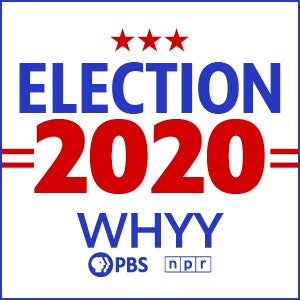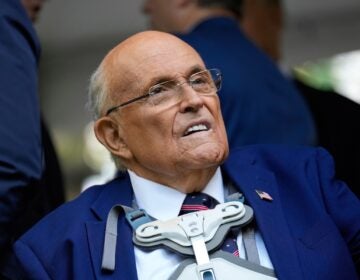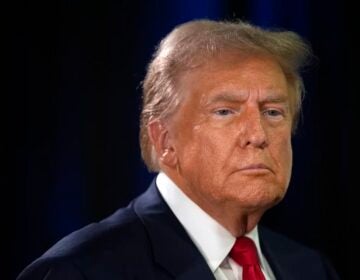The quirks of being ‘viable:’ How satellite Iowa caucus-goers in Philly made their picks
In a new effort to make the process more inclusive, Philly was home to a satellite Iowa caucus. Voters navigated “electability” and the pressure of going first.
Listen 1:53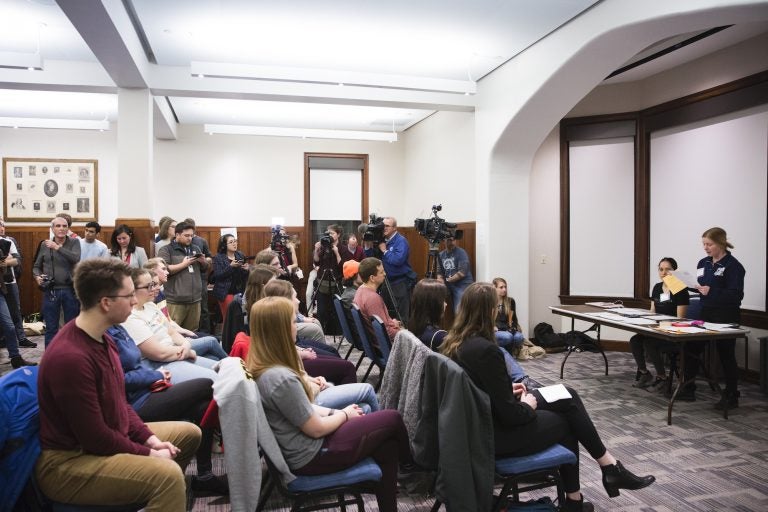
Fourteen Iowa residents partake in a satellite Iowa caucus at the University of Pennsylvania on February 3, 2020. The group ultimately assigned two delegate votes to Bernie Sanders, one to Elizabeth Warren, and one to Pete Buttigieg. (Rachel Wisniewski for WHYY)
In a first-of-its-kind effort to make the process more inclusive — and hours before Democratic Party leaders caught wind of a malfunction that delayed reporting results — Philadelphia was home to a satellite Iowa caucus Monday night.
Fourteen registered voters from Iowa who are living in Pennsylvania, mostly white students studying at area universities, picked their top candidates for the Democratic nomination for president.

While the official results may not be tallied until later on Tuesday, Sen. Bernie Sanders won the night at this precinct with six supporters (the equivalent of two delegates), with Sen. Elizabeth Warren and Mayor Pete Buttigieg tying for four supporters (one delegate each).
Though a small sample size — there were 1,678 precincts in the Hawkeye State — the Iowans in Philly navigated issues that have plagued family and friends back home this nomination cycle, like the much-discussed “electability” question and whether Iowa should even kick of the Democratic nomination process.
“Honestly, I don’t think that Iowa should be the first in the caucuses anyway,” said Bernie Sanders supporter Gemma Van Nice, a 19-year-old Bryn Mawr College sophomore from Des Moines. “But because we are, it’s important, I think, to go out and participate in it, which is why I’m here in Philadelphia doing it.”
Van Nice pointed to the lack of diversity in her state, which is roughly 90% white, and worried that Iowa’s top performers might not be representative of what the country wants, but will get a boost, nonetheless.
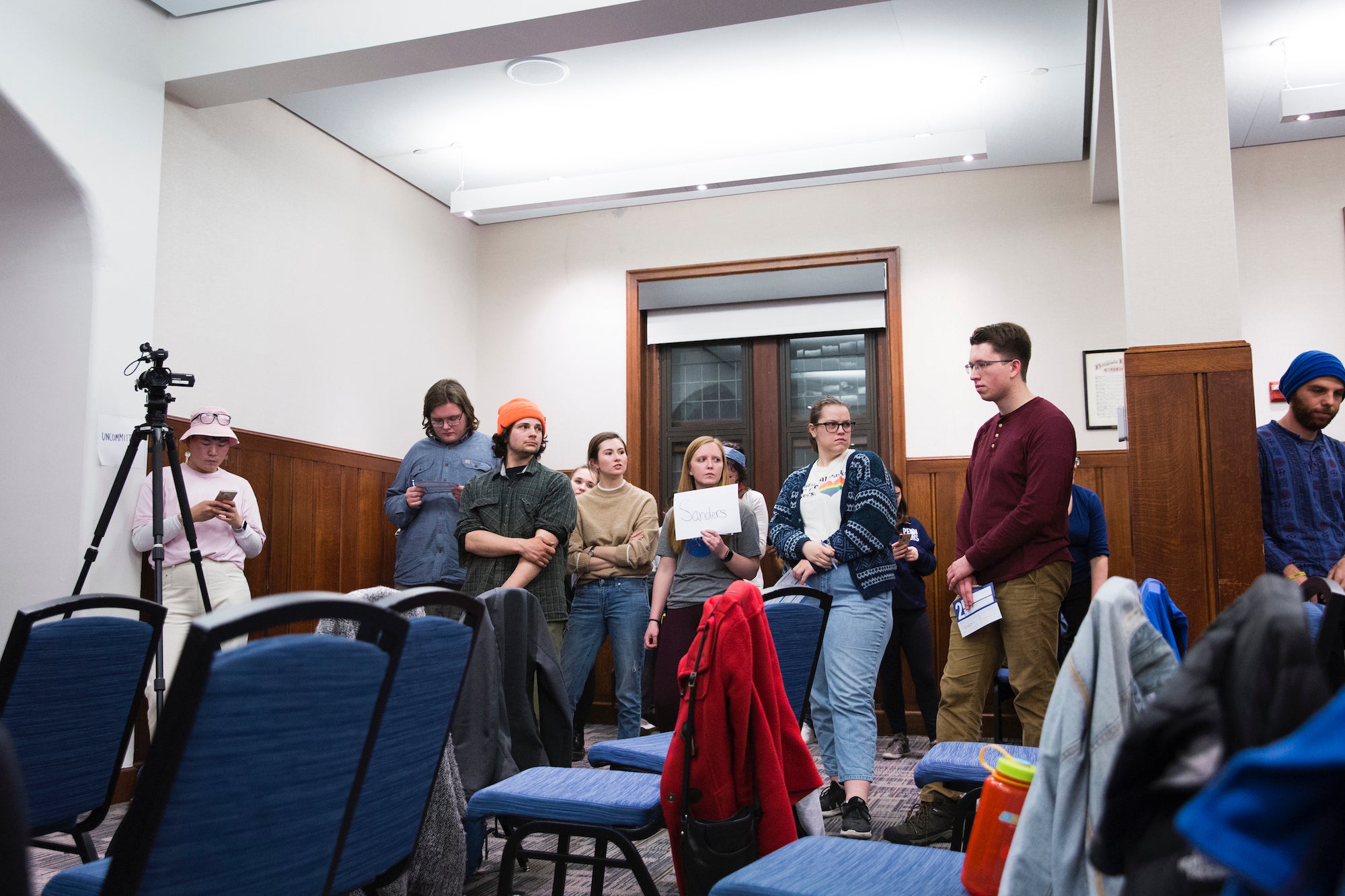
Seven of the last nine candidates who won Iowa became the Democratic nominees for president. It’s a statistic that weighs on caucus-goers who gave Hillary Clinton a 0.3% edge in 2016.
Before the start of the event, Tali Flatte, a 22-year-old design student at the University of Pennsylvania and a first-time caucus participant, said she felt some pressure “to find someone who’s electable and someone who’s going to be effective and who people will connect with.”
Still, as a Warren supporter, Flatte said the question of electability played a greater role in choosing her backup if her first choice had been found not to be viable.

Flatte agreed with “95%” of Warren’s ideas, thought the senator did the best job at connecting with young people, and could unify the party in ways she didn’t think Sanders — the closest to Warren in ideology — could. To Flatte, Sanders wasn’t electable and so her backup was former Vice President Joe Biden.
Adding to the evening’s intensity were gaggles of reporters and campaign volunteers representing Sen. Amy Klobuchar, Sanders, Warren and Biden.
Caucus Chair Emma J. Carlson, a non-Iowan, read instructions to participants and observers.
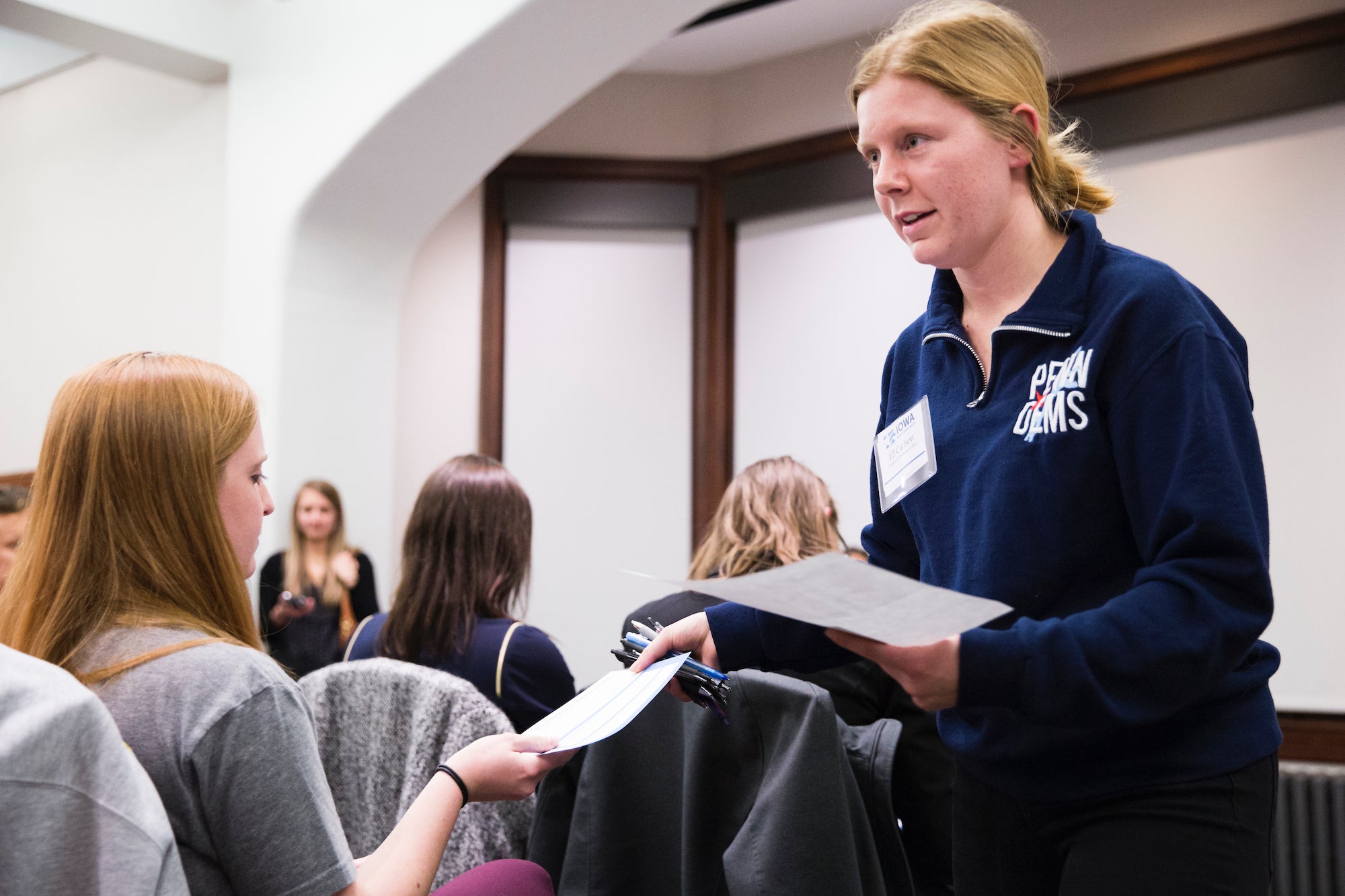
Caucuses are an open process so it’s no secret whom participants are backing. Participants and campaign volunteers were even given the option to speak on behalf of their pick before the participants split off by candidates.
For a candidate to be “viable,” Carlson explained they would require the support of at least 15% percent of the participants, or in the case of the Philly group, three people.
At stake, are portions of the state’s 41 delegates sent to the 2020 Democratic National Convention in Milwaukee.
The candidates with the largest margins of support across all the precincts will get the largest portion of delegates.
After the first alignment, or grouping of different candidate supporters, Carlson named Sanders (with five supporters) and Warren (with three supporters) the only viable candidates.
“Those eight people are locked into your groups as delegates for Bernie Sanders and Elizabeth Warren,” Carlson explained before giving the supporters of nonviable candidates 10 minutes to join the candidates with locked in support or bolster a different nonviable group.
Nonviable groups backed Klobuchar (1), Biden (1), Buttigieg (2) and Andrew Yang (2).
“It’s all kinds of complicated math. You’re trying to figure out who wants to stay and who wants to leave,” said Jessica Anderson, 21, who found herself trying to bring one more person into the Yang fold (her first choice), while keeping in mind the other Yang supporter was not willing to back Buttigieg (her second choice).
A biology student at the University of Pennsylvania and first-time caucus goer, Anderson helped organize the satellite location at the suggestion of at least three campaigns and because she supports efforts to boost participation in the process.
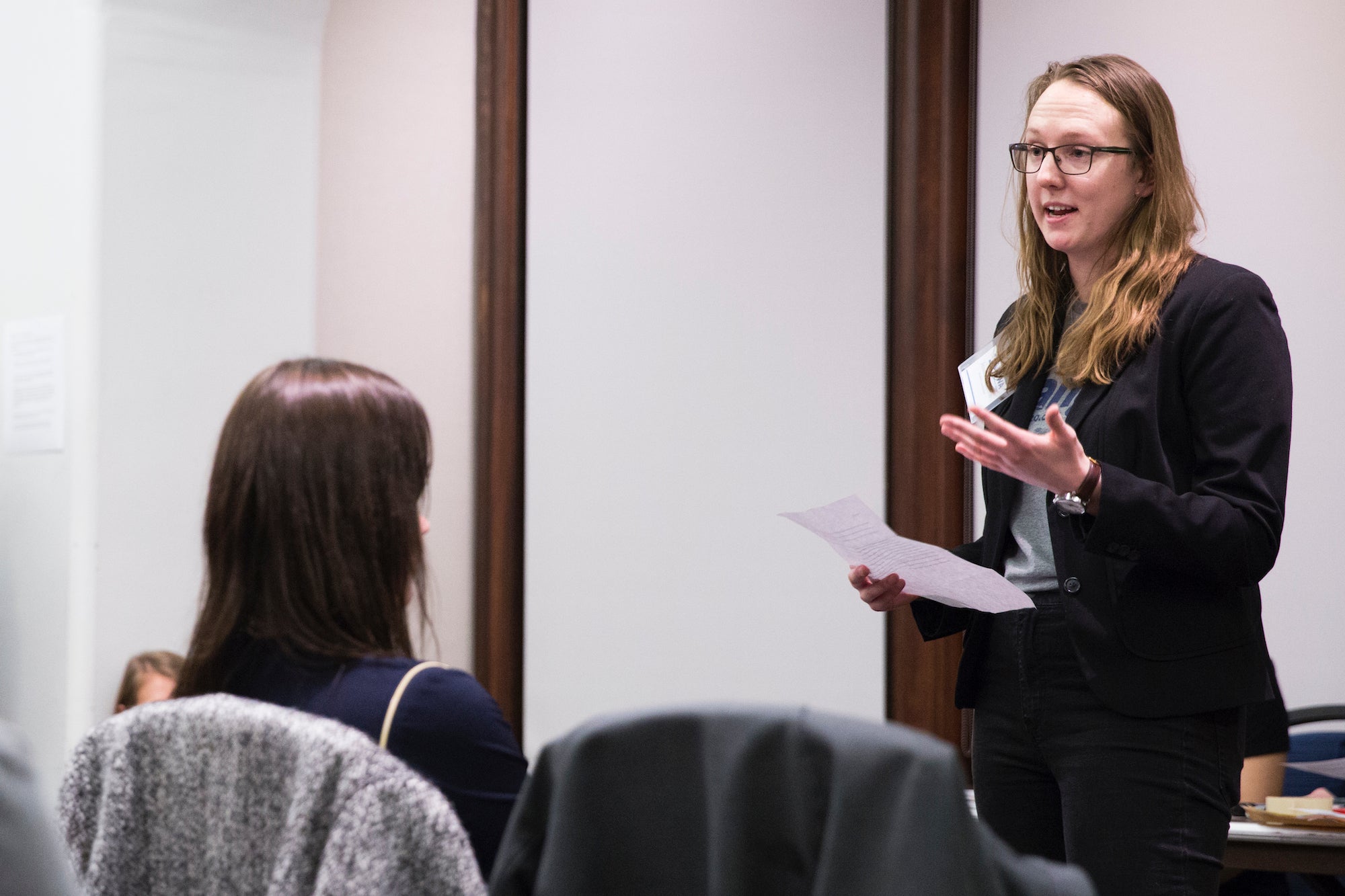
A fan of Yang’s “freedom dividend” — a proposal that would give every American adult $1,000 each month — Anderson tried to pitch the idea and warned of the perils of automation. One participant told Anderson a hand-out would never gain popularity.
Ultimately, Anderson moved on from Yang.
“What I ended up caring about more than necessarily Yang’s success was building a consensus among the group and so for me, my second choice was to go for Buttigieg,” Anderson explained.
For Samuel Pederson, a 19-year-old college student at Drexel University, it’s this portion of the caucus that made him feel the heat.
“It was like, ‘OK you need to choose now or else your vote is being thrown away, basically,’ which I don’t think is right necessarily,” he said. “I wish you could just kind of have it be more like a traditional primary instead of a caucus where there’s no drop-off percentage and people can still support who they want to.”
Pederson, who was torn between Sanders and Warren as a second pick, followed a last-minute gut feeling to join the Sanders camp.
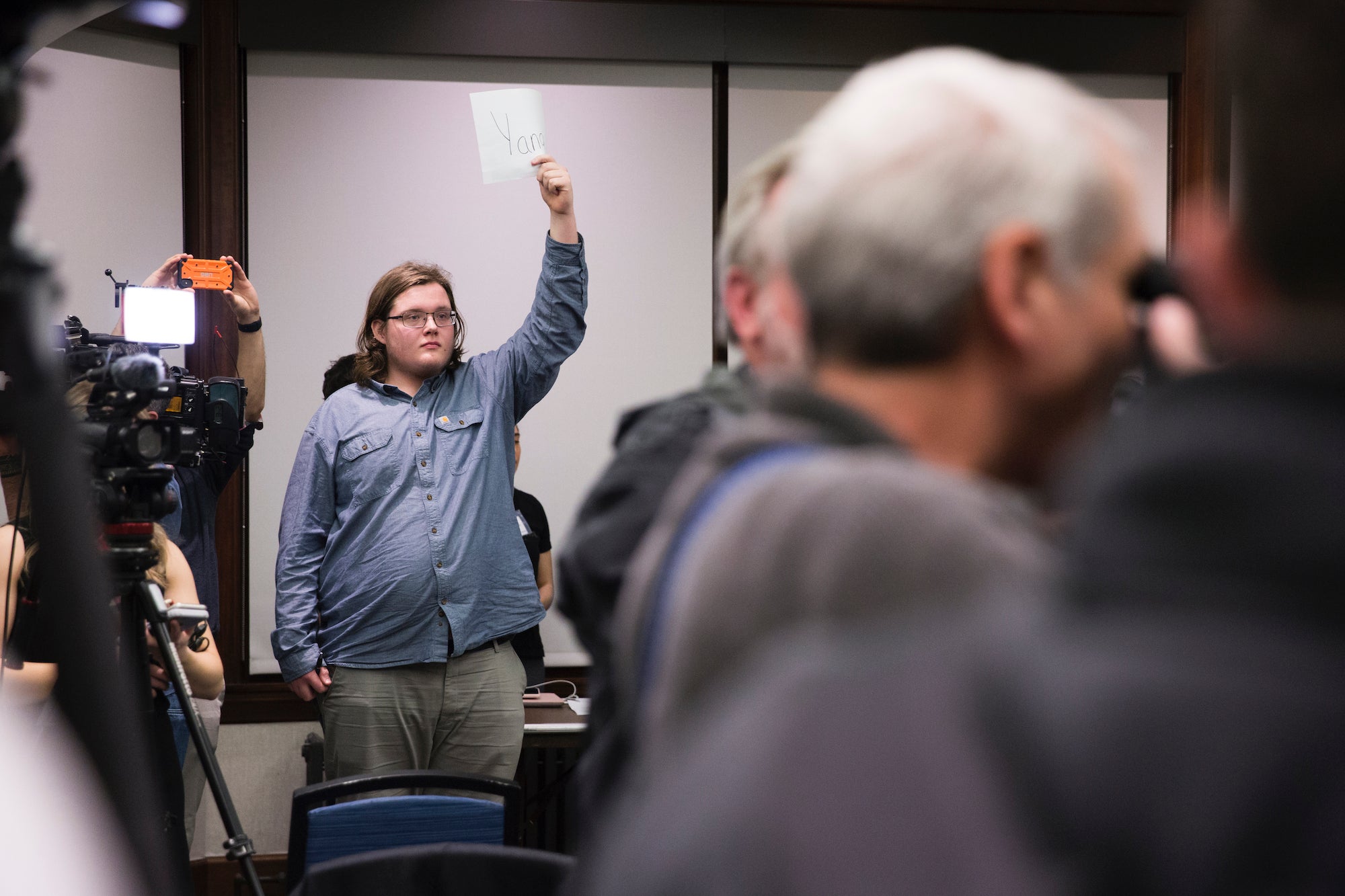
But echoing comments made by the many people in the room, Pederson said electability played no role in his thought process.
“I don’t’ see [electability] as an actual thing you can judge a candidate by,” he said. “I feel like you can judge a candidate by their words, by their actions, by their policies. But judging them by electability doesn’t make any sense because electability is based off those other aspects.”
When the second realignment ended, Sanders had six backers, while Warren and Buttigieg each had four.
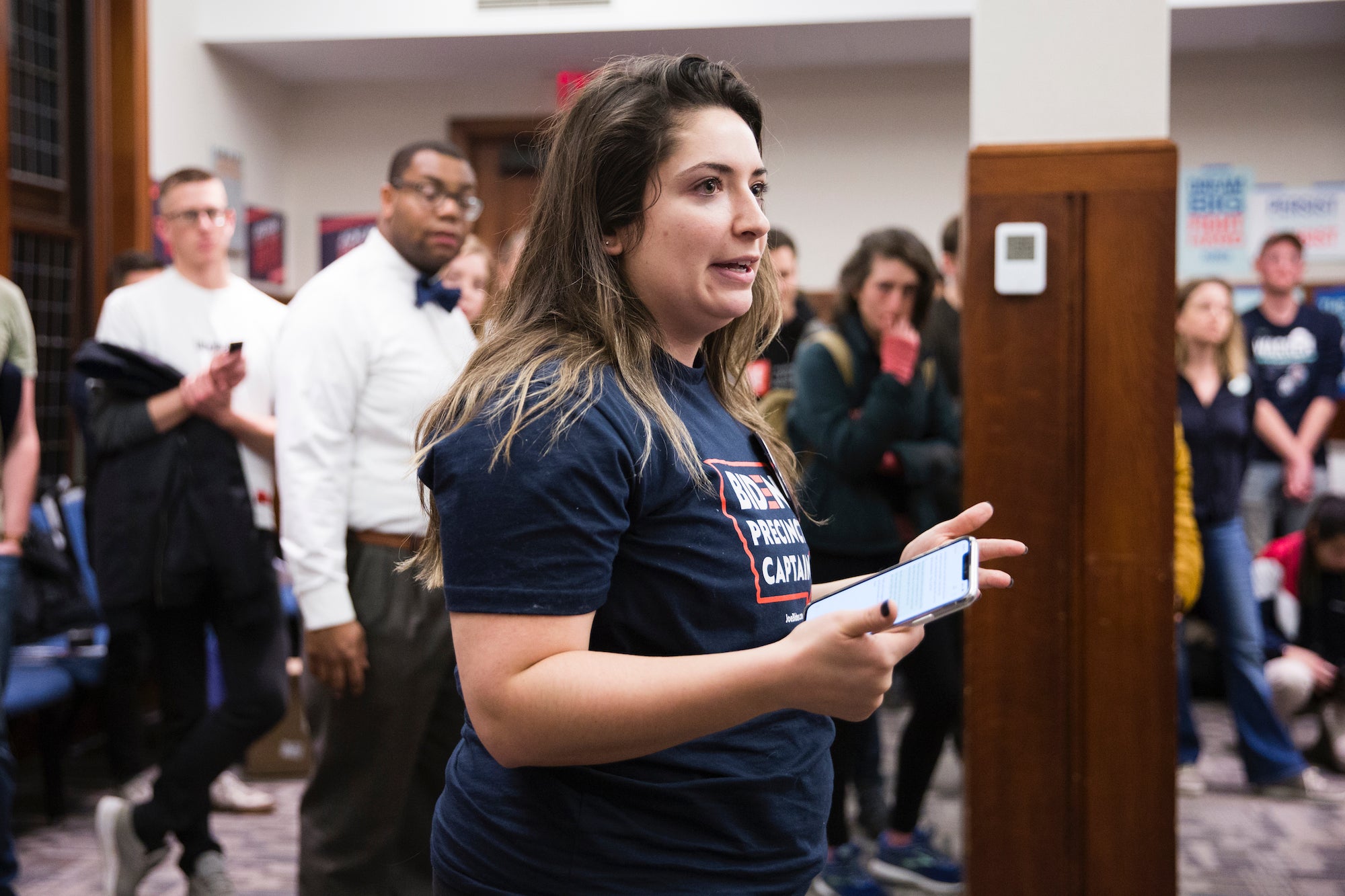
And even Flatte, the design student who did feel the pressure to back an electable candidate, felt at ease and optimistic about the 2020 election.
“At the end of the day, all of the candidates are going to be infinitely better than Trump,” she said.
WHYY is your source for fact-based, in-depth journalism and information. As a nonprofit organization, we rely on financial support from readers like you. Please give today.


